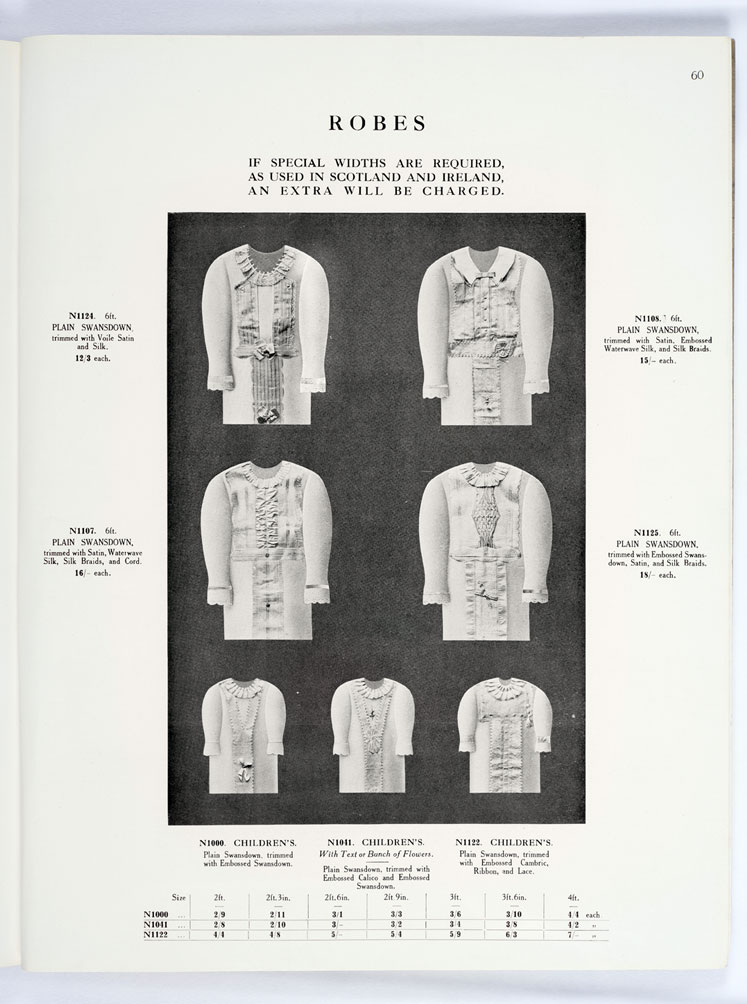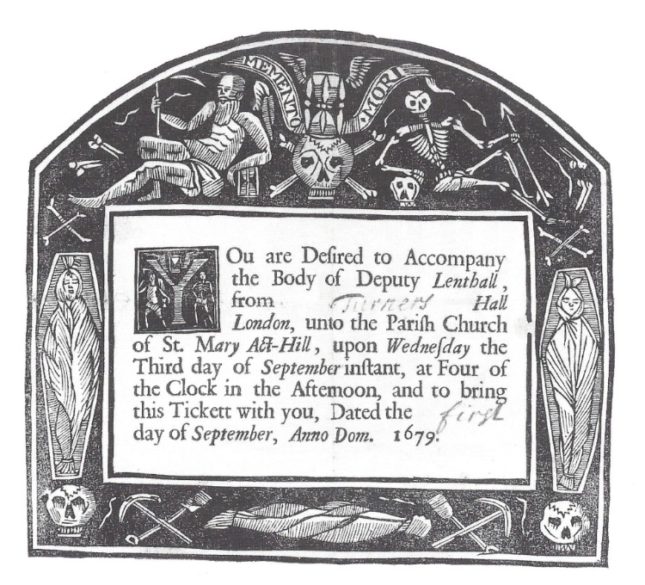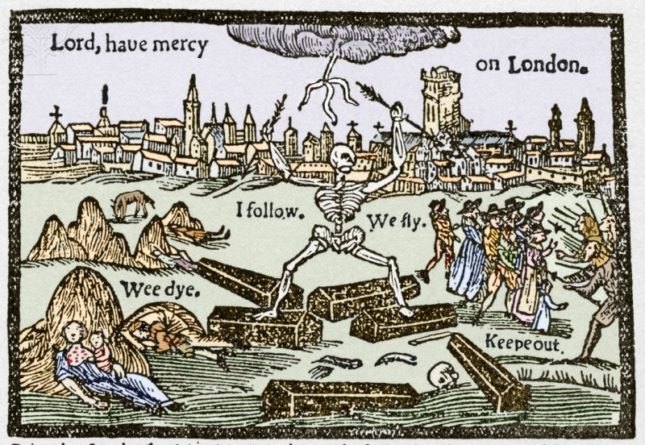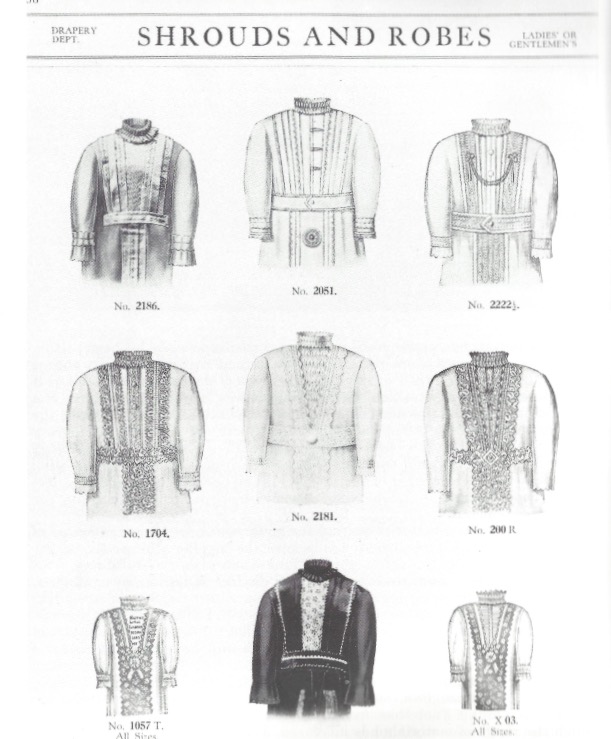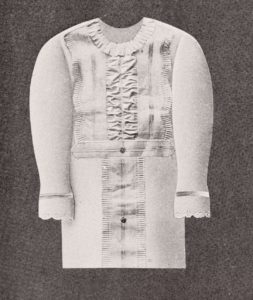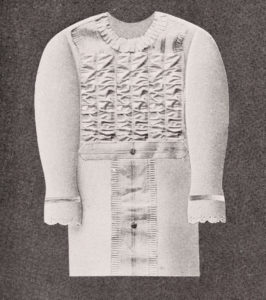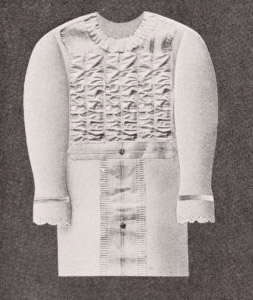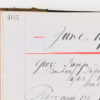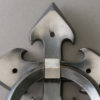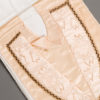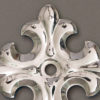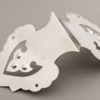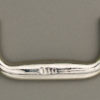If Special Widths are Required an Extra Will Be Charged
‘If special widths are required, as used in Scotland and Ireland, an extra will be charged’. Those words grace the page of a Newman Brothers’ catalogue, dating from the 1920s, in which ‘robes’ are advertised.Robes in this instance refers to funerary gowns or shrouds. These words have puzzled us at Newman Brothers for a while. Why did the Irish and Scottish use special widths? And which part of the shroud did these special widths refer to?


